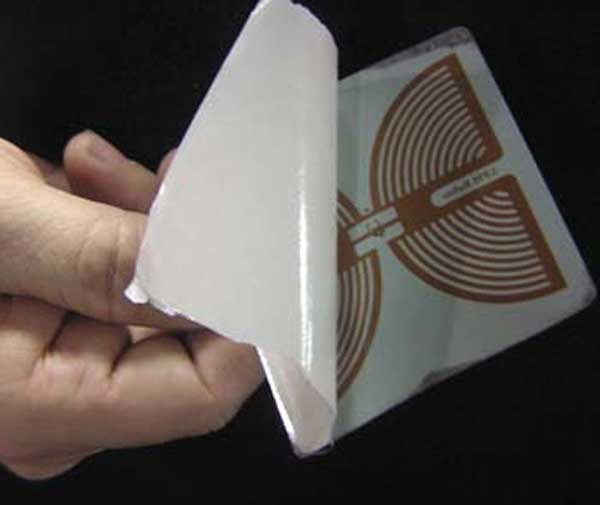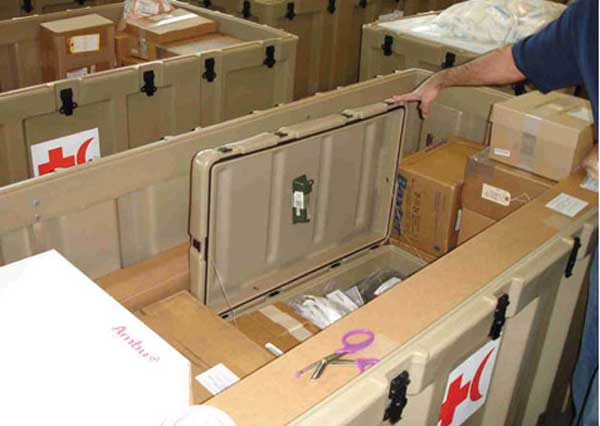By Kirsten Ashbaugh
**@*****fo.com
01/02/2011 – In September 2010, Second Line of Defense attended IDGA’s Military Logistics Summit 2010 in Vienna, VA. At the conference, Dr. Robb Clarke of Michigan State University discussed RFID and other Auto-ID technologies and their role with supply chain optimization.
RFID, or Radio Frequency Identification, uses a system of readers and tags to store information about an object or product. The technology is hardly new; one of its first uses was to identify cattle and livestock. The system works when the reader sends out a signal to the tag, which, using the power generated from the reader’s signal, sends back a signal identifying its material or product. Not all tags are equal: passive tags, which are the cheapest, do not transmit active signals; semipassive tags, slightly more expensive, may be able to monitor qualities of the material, such as climate, but also do not transmit active signals; active tags, the most expensive of the three, have a power source and are able to continuously send active signals.

RFID is already subject to a great deal of scrutiny and research; the implications of the technology are enormous for many industries. As Dr. Clarke explained, food and pharmaceutical industries can use it for safety and sterility as well as identification; consumer industries may use it for marketing. According to the Economist, smart sensors such as RFID are used in oil exploration and government systems such as public transportation, toll roads, and power meters.
The military recognizes the vast opportunities RFID and similar technology would afford. RFID technology has the ability to answer these questions, Dr. Clarke says:
- Where are (or aren’t) things?
- How many are there?
- Are they time sensitive?
- Are they real?
- How will this provide safety or security?
As with any form of automation, RFID saves time by automatically identifying the qualities of the characteristic by answering the above questions. Improved efficiency will lead to faster and better responses to the needs of the warfighter. Dr. Clarke lists the benefits of Auto-ID, including more accurate inventory, quick product recalls, increased safety, decreased product diversion, and verification of product authenticity, to which one could add efficiency gained from automation; more broadly, this all leads to enhanced asset-tracking. RFID in a military sense would allow troops to track what supplies they have as well as the transportation of new supplies coming to them. The US Army, working with the DoD, has begun to implement RFID, using the Radio Frequency In-Transit Visibility (RF-ITV) System—reportedly the world’s largest RFID-enabled asset visibility system—to track the identity, status, and location of cargo as it is transported (Defense Industry Daily).
Another field of the military that can and will benefit is medical care. In the DoD’s FY 2007 Budget Estimates, there was a focus on using RFID “to improve the end-to-end visibility and tracking of medical supplies, resulting in enhanced medical care for the warfighter.” There has also been discussion of whether RFID may be used to track the actual physical condition of soldiers coming into medical centers; according to Defense Industry Daily, the US Navy’s combat casualty care unit has used RFID to track casualties in Iraq, using RFID chips sewn into soldiers’ cuffs to track the wounded arriving for treatment at field hospitals.
Testing the placement of sensor tags in medical sets (Credit: http://www.almc.army.mil/alog/issues/JulAug08/enhancelog_w_sensortech.html)
There are issues holding RFID back. Because these are radio frequencies, Dr. Clarke points out that they will not penetrate water and they are affected by the shape of the material as well as what the material is made of or surrounded by, be it metal, plastics, glass, or paper. They are limited to the distance over which the tag can draw enough energy from the reader. Price can limit the implication; active tags, for instance, are considerably more expensive than passive tags. Dr. Clarke also states that passive tags have a virtually limitless life, while active tags may require more maintenance or replacement of their power source.
One of the major concerns is over security. RFID tags may be read by anyone, which means they may not just be read by their military owners but also the military’s enemy. The Department of Defense certainly recognizes this concern; the great amount of research on RFID does include research into better security, such as cryptographic methods.
Defense Industry Daily also states that the DoD has not been able to achieve widespread implementation of the technology because of its inability to demonstrate to the return on investment, arguing that “it does not uniformly collect information on both the costs and benefits associated with implementation.”
With increased research on RFID, the military and other industries will benefit from the improved efficiency and accuracy of this technology. Increased visibility of supplies means the warfighter will be better equipped—faster, more accurately, and at a lower cost than he previously was before.


